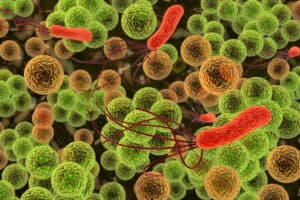
As more medical teams leverage AI, scientists hope that solutions to persistent drug-resistant bacteria will appear more readily while reducing research costs.
Drug-resistant bacteria are becoming a more pervasive problem, but thanks to AI, a new drug could finally defeat one particular variety. In a study published in the journal Nature Chemical Biology, researchers were able to use an AI-derived drug to defeat 41 strains of antibiotic-resistantAcinetobacter baumannii.
Defeating a persistent hospital bacteria
The superbug in question is commonly found in hospitals and is able to grab bits of DNA to fit into its own defense mechanisms. This causes difficult-to-treat skin, blood, or respiratory infections with a high fatality rate. In one study, one in four patients died from these infections despite receiving the currently available treatment.
This makes it especially challenging for researchers to leverage old methods of drug discovery. They take too long and offer too many red ends to use effectively when superbugs are evolving faster than ever. Researchers leveraged AI to process large amounts of data and shorten the drug discovery process.
See also: AI in Healthcare: Emerging Trends to Follow In 2023
How the study worked and the role of AI
The team utilized something called high throughput drug screening, exposing the bacteria to thousands of drugs and individual components. The group found nearly 500 components that inhibited growth. Once the team fed this information into AI, it was able to screen thousands more chemicals to find ones that would perform the same.
The team narrowed chemicals down based on AI feedback and tested them, leaving one particular compound that works to inhibit the superbug in question. Even better, the potential drug is not a broad-spectrum solution. Instead, it works solely on this particular bacteria, which reduces the chances of evolving resistance.
The team may have spent years searching for this solution without AI support. As more research teams leverage AI to solve challenges like these, researchers hope that solutions to persistent drug-resistant bacteria will appear more readily while reducing the cost of this research.





























